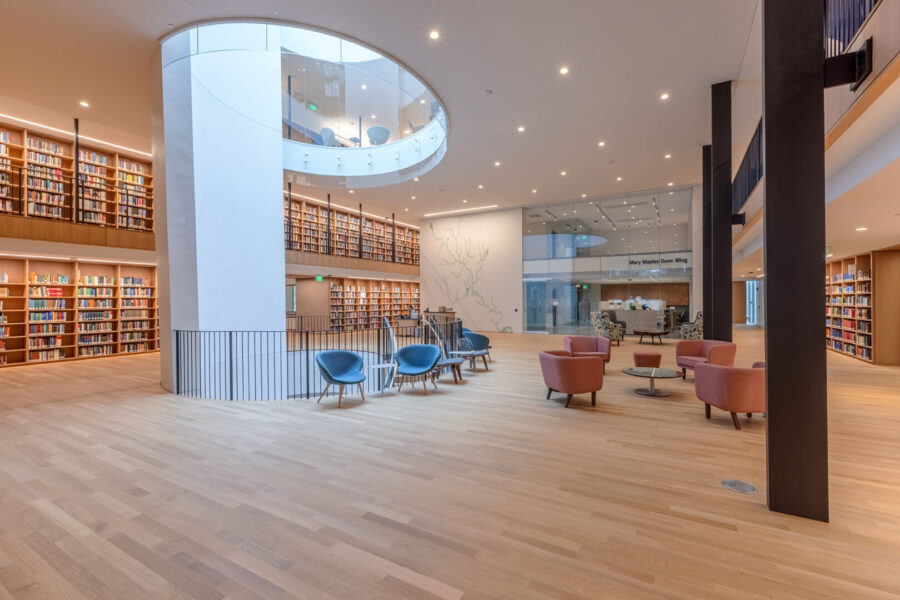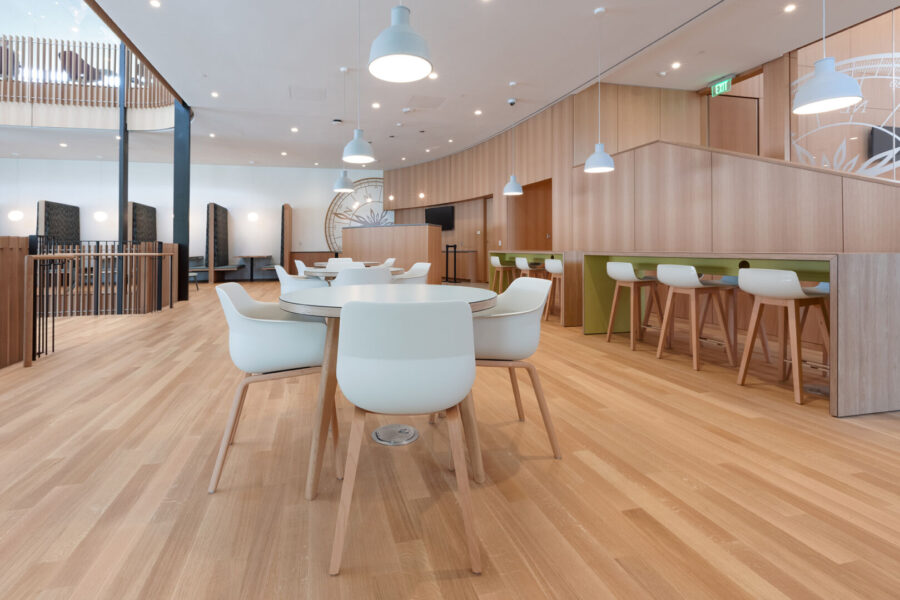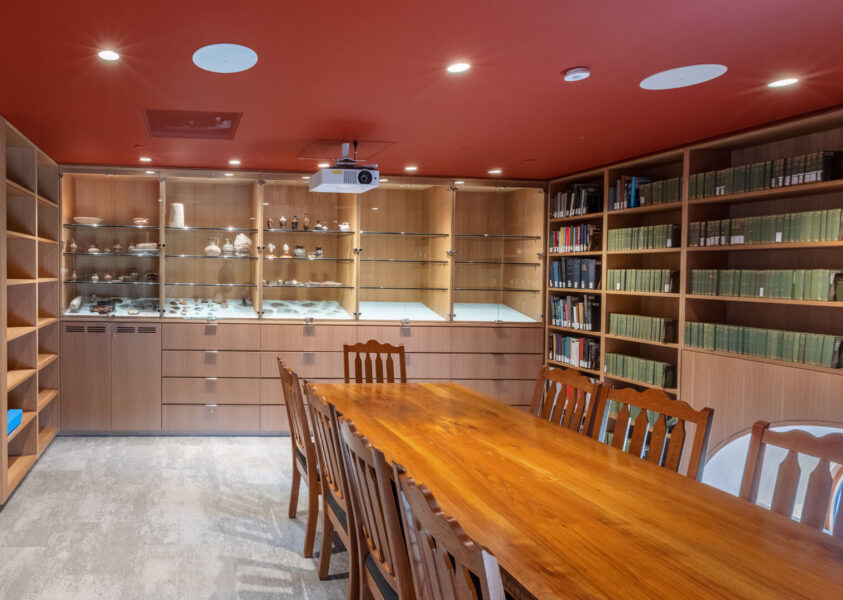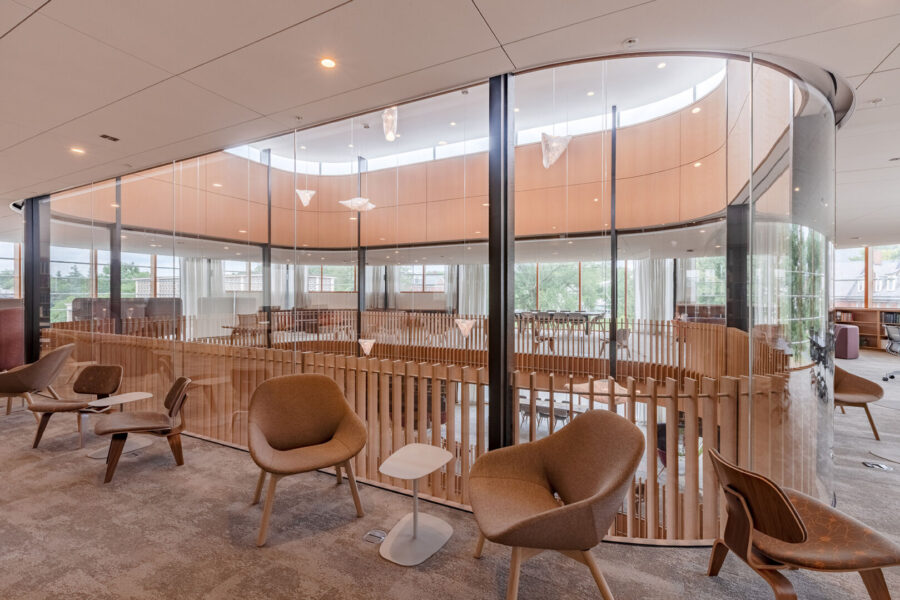PROBLEM:
The Neilson Library at Smith College—originally built in 1909—required an extensive electrical overhaul to serve as a functional meeting place in the 21st century.
SOLUTION:
Collins Electric created a complete BIM and carried out a plan to install 5,000 energy-efficient fixtures with dimming and lighting controls to balance LED and natural light.
RESULTS:
An aesthetically pleasing, award-winning restoration that incorporated state-of-the-art technology and an energy-efficient design, while protecting important historical works.
The Library of the Future Honors the Past
Chartered in 1871 and opened in 1875, Smith College in Northampton, Massachusetts, has an extensive history as an elite women’s institution of higher education. At the college’s heart, the Neilson Library functions as a centerpiece to provide students, faculty and alumni with an elegant and inspiring space to learn and grow. Smith recently renovated the entire building to bring it into the digital age—a project that required aesthetically pleasing and expertly planned electrical work.
A Much-Needed Overhaul
The Neilson Library had served the Smith community for more than 110 years, with additions to the original structure in the 1930s, 1960s and 1980s. While historically significant, the library—originally built in 1909—needed an extensive electrical overhaul to serve as a functional meeting place for visitors in the 21st century.
There were many hurdles to this goal, including the need to remove all the old power and fiber communications and to work around the confines of the remaining structure. A project of this size and complexity required a trusted electrical contractor, one who could handle multiple complex design elements while respecting the historical significance of the space. As the selected contractor, we exceeded expectations with a project that achieved LEED Gold certification for the facility. For the originality, difficulty and quality of the work, we earned a National Electrical Contractors Association (NECA) Project Excellence Award in Education.



A Forward-Thinking Solution
Our renovation focused on maintaining the personality of the original building while integrating the necessary lighting, sustainability features and cutting-edge technology for today’s students and faculty. The process involved gutting and demolishing most of the existing structure, so that the front and rear brick brownstone façades were the only remaining elements. The new 150,000-square-foot building—constructed around these façades—is outfitted with 5,000 energy-efficient LED light fixtures as well as dimming and window-shade controls to deliver the highest-quality, most efficient lighting possible.
We first removed all the existing power and fiber communications, which required multiple shutdowns and rerouting efforts. Our team quickly discovered that the tight constraints set by existing window openings in the façades made it impossible to alter the structure’s floor-to-floor clearance. The limited use of accessible ceiling space required us to perform extensive 3D modeling at the onset of the project. We created a complete building information model (BIM) of the required mechanical, electrical and plumbing (MEP) systems, to ensure all of the systems would fit within the restricted spaces. Based on the BIM, we detailed 500 beam penetration points and 146 different fixture types—some of which had to be imported—for a total of nearly 5,000 fixtures.
The LEDs are designed to operate in conjunction with “The Oculus”: a 74-foot tower that allows entry of natural light on every floor. We wired the intricate Lutron dimming controls and window-shade controls to balance the amount of sunlight allowed in on bright and dark days. To further our focus on efficiency, we incorporated a Square D PowerLogic Branch Circuit Monitoring System, which tracks and inspects power and energy usage at each branch circuit to ensure the HVAC systems run at optimal efficiency.
The Neilson Library serves as more than just a campus crossroads; it supports women’s education through an internationally recognized book repository. The Mortimer Rare Book Collection features texts ranging from ancient history to modern-day literature, including the papers of Sylvia Plath and Virginia Woolf. For this part of the project, we had to pay strict attention to the room’s controls in order to regulate temperature and light and ensure security for the collections.
Award-Winning Results
For our part, Collins Electric was recognized by NECA with a Project Excellence Award in Education for Over $1 Million based on the renovation’s difficulty, originality, aesthetic, technology and quality.
This unique restoration—one of the most challenging in Smith College’s 150-year history and Collins Electric’s 116-year history—is a salute to the past, current and future members of our team. Smith College is now outfitted with an elegant, one-of-a-kind library that students and staff can enjoy for the next century—complete with natural light, an energy-efficient design and innovative technology.

